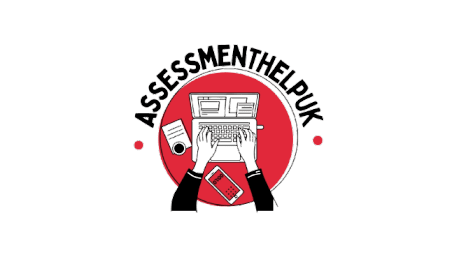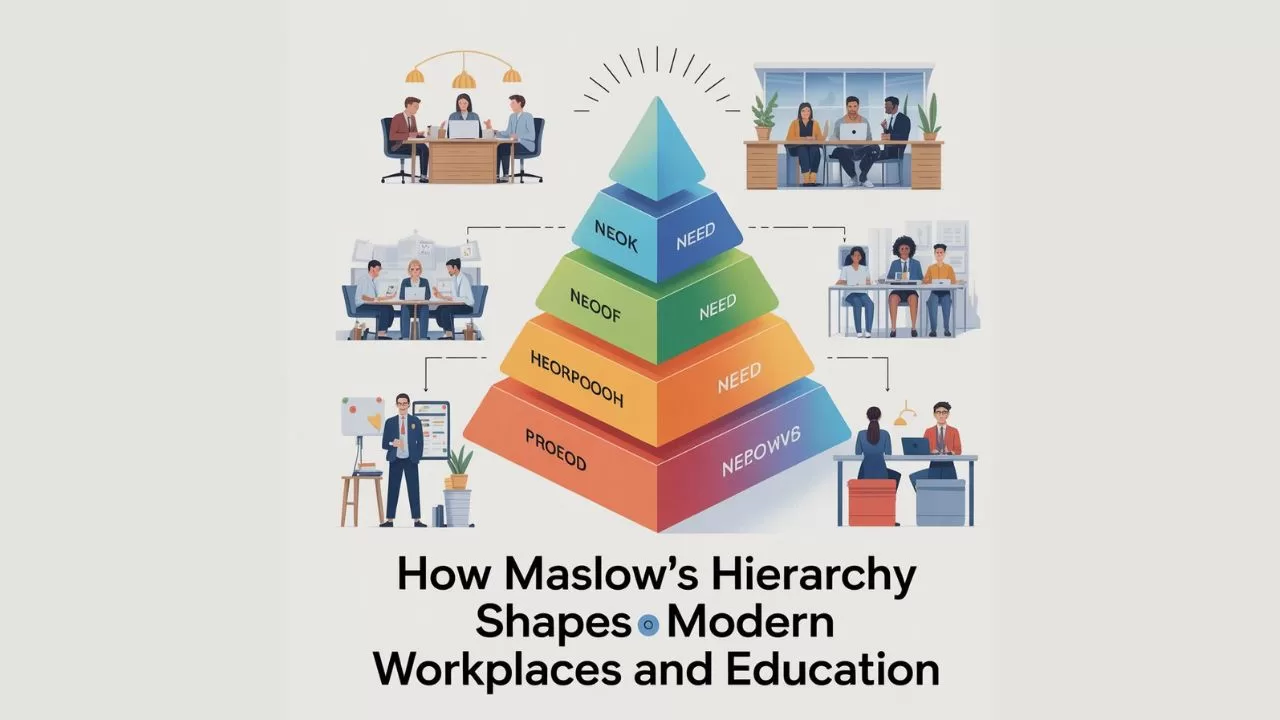Why we work, learn, and grow, it all circles back to one timeless human need: purpose.
Knowing what drives people isn’t just psychology; it’s a keen strategy. Maslow’s Hierarchy of Needs may have been introduced in the early 1940s, but its influence runs deep through today’s offices, classrooms, and even in leadership models. So whether it’s a manager striving to boost team engagement or an educator trying to mentor a student, the same human layers of motivation are applied thoroughly.
Here in this guide, we will be seeing how Maslow’s Hierarchy in the workplace continues to define how we motivate, lead, and even educate. We will be seeing how this classic psychological model has changed from a theoretical structure into a practical pathway for modern productivity, purpose, and wellbeing.
Maslow’s Influence On Today’s Work Culture
Maslow’s Framework offers a unique perspective on employee motivational theory. It reminds us that before employees can achieve their best, their foundational needs from security to belonging must be met. In a modern workplace, this translates into a culture where salary, let alone being sufficient, isn’t sufficient; one must get recognition, trust, and growth just as much as anything else.
When businesses invest in emotional wellbeing, team bonding, and autonomy, they’re not being trendy; they’re applying a timeless psychology. From flexible work policies to mentorship programmes, each initiative nurtures safety and belonging, satisfying key levels of Maslow’s pyramid.
Where Business Meets Human Needs
Let’s break down a few workplace parallels and see what an employee usually looks for:
- Physiological Needs: Fair pay, comfortable workspace, and work-life balance.
- Safety Needs: Job security, clear policies, and mental health support.
- Belonging Needs: Team connection, diversity, and inclusion.
- Esteem Needs: Recognition, promotions, and skill-building opportunities.
- Self-Actualisation: Purpose-driven work, leadership roles, and innovation.
From Classrooms To Career Paths: Maslow’s Theory In Education
Maslow’s theory in education reminds us that learning always thrives in supportive environments. Students do need more than books; they need belonging and confidence way before they can chase excellence. A school that celebrates individuality, values emotional safety, and builds self-esteem lays the foundation for lifelong motivation. The same principles go forward into a career, where an intrinsic motivation continues to fuel success.
For a better understanding of the pyramid itself, you can even explore my previous guide on “Understanding Maslow’s Hierarchy of Needs.”
Applying Maslow’s Hierarchy In The Workplace: Turning Theory Into Everyday Leadership
Understanding Maslow’s Hierarchy in the workplace isn’t just about ticking boxes on a motivation chart; it’s about understanding people at their most basic level. Behind every quarterly target, performance review, and brainstorming session is one shared truth: employees do want to feel secure, heard, valued, and inspired. The most progressive leaders not only manage people through rules, they guide them with recognition, empathy, and true trust.
Building The Foundation: Meeting Basic And Safety Needs
Every employee’s motivation starts with the basic principles. A steady income, safe working conditions, and a predictable structure that creates the psychological foundation for performance. Out of these factors, if one is missing, expect a delayed pay, unclear expectations, or even workplace toxicity, even for the most proficient worker who loses focus.
Forward-thinking organisations address this by:
- Offering competitive pay and job stability reducing uncertainty.
- Prioritising health and wellbeing, both physical and mental.
- Encouraging flexibility, ensuring work-life harmony.
This foundation creates a safe environment where creativity and confidence can grow back, because people do their best when they’re not worried about survival.
Creating Belonging: The Heart Of Workplace Motivation Psychology
Once safety is established, employees seek community. This stage is usually underestimated but forms the emotional backbone of workplace motivation psychology. People thrive in teams where collaboration outweighs competition and diversity isn’t simply welcomed, it’s celebrated.
Leaders can foster a sense of belonging by encouraging open communication, building inclusive teams, and incorporating shared values. Even small gestures, such as celebrating milestones, praising efforts, or even asking for feedback, build trust and strengthen culture.
“When people feel seen and heard, they don’t just work harder, they work with purpose.”
From Recognition To Real Growth
The upper tiers of Maslow’s hierarchy, like esteem and self-acutalisation, are where the true transformation happens. Employees begin craving impact, mastery, and purpose. They want to grow above roles and contribute something that’s meaningful, which is why visionary companies are now investing in mentorship programmes, creative autonomy, and leadership pathways.
These aren’t some usual benefits; they’re expressions of belief. When people are given the right place to evolve, they drive results exceeding expectations, turning every theory into a fostering workplace culture.
How Modern Education Reflects Maslow’s Principles
Education isn’t just about grades; it’s about sustenance and growth. While teachers primarily focus on academics, the real success of modern learning environments depends on understanding the human mind. That’s the peak point where Maslow’s Hierarchy in the workplace finds its mirror image in the classrooms. The same motivations that drive an employee to go above and inspire students to learn, explore, and thrive.
The Foundation Of Learning: Meeting Students’ Basic And Safety Needs
Just before the spark of curiosity flourishes, comfort needs to exist. A hungry, anxious, or insecure student will always lack concentration, not because of a lack of ability, but because their basic fundamentals aren’t met. Schools are now becoming more aware of this psychological truth.
Many institutions now prioritise:
- Healthy meal plans and safe environments reduce anxiety.
- Emotional support systems, including counsellors and mentors.
- Predictable routines help students feel grounded and focused.
When students feel safe and secure, they can shift from fight or flight mode to subtle, serene, calm, and exploration mode, which is the first step towards meaningful learning.
Belonging And Confidence: The Heart Of Motivation In Education
Academic outcome is proportionally linked to emotional connection. When students feel accepted and valued, their active participation increases naturally, and that’s where you see Maslow’s theory in education becoming a massive transformative change. Classrooms that encouraged group projects, support, and open discussions now foster belonging. Teachers who use positive reinforcement and celebrate small victories build esteem. These are not just teaching methods; they’re motivational anchors that turn education into empowerment.
Reaching Self-Actualisation: Beyond The Classroom
When students find their potential, self-actualisation, the top of Maslow’s hierarchy, comes alive. Modern education stresses personal satisfaction, inventiveness, and critical thought in addition to academic achievement.
Students start defining their own identity and direction as they are free to explore, challenge, and invent. Education in this phase evolves beyond lessons to become a transformation.
By fostering safety, belonging, and respect, instructors are creating future leaders motivated by purpose, empathy, and self-belief in addition to teaching facts.
The Business Perspective: Embedding Maslow’s Hierarchy Into Leadership And Growth
For most businesses, Maslow’s Hierarchy in the workplace isn’t just some module to follow; it’s a strong management philosophy. The modern business landscape needs more than profits; it demands strong purpose. Leaders now recognise that meeting humans’ needs at every level isn’t a soft skill, it’s a competitive edge.
Building Purpose-Driven Organisations
The strongest companies have something in common: They make cultures around trust, belonging, and meaning. When employees feel safe and valued, they don’t just perform better, they stay longer, innovate more, and influence others positively. This evolution marks a clear shift from control-based management to growth-oriented leadership.
Maslow’s hierarchy of needs in business translates to:
- Safety and Stability: Transparent communication, ethical policies, and dependable leadership.
- Belonging and Connection: Team-oriented cultures that celebrate diversity.
- Esteem and Recognition: Platforms that recognise individual contribution and skill.
- Self-Actualisation: Opportunities for creativity, impact, and innovation.
Leadership That Empowers, Not Commands
In practical implementation, applying Maslow’s theory at work means that you’re replacing the old school hierarchies with the most empathy-driven leadership. Employees are no longer attracted to fancy titles; they respond to trust. A great leader today isn’t defined by authority, but rather by the ability to listen, support, and inspire. From flexible work models to all the way to continuous learning initiatives, leadership now strongly focuses on human development as much as business growth.
The Ripple Effect Of Motivation
Once Maslow’s model becomes a part of the organizational DNA, motivation starts to multiply. Employees who once felt not so motivated begin to inspire others and set themselves as an example, creating a ripple effect that strengthens culture and productivity. This way, Maslow’s timeless hierarchy stays more than a theory; it’s a self-reflection of modern leadership, which in a modern day is future-ready.
The Human Thread That Connects It All
Regardless, whether it’s a student who’s striving to learn or an employee who is aiming to grow, the real joy of motivation remains confined, the desire to be seen, supported, and fulfilled. Maslow’s Hierarchy, seen in the workplace, reminds us that success starts with understanding people as humans first. The most progressive schools and businesses share a strong belief: When human needs are met, potential unfolds seamlessly, from safety and belonging to creativity and purpose, that’s where the true performance starts and never stops.
FAQS
How Is Maslow’s Hierarchy in the Workplace Used by Modern Leaders?
Modern leaders use Maslow’s hierarchy to design supportive environments that priorities employee wellbeing, motivation, and growth before expecting peak performance.
Why Is Maslow’s Theory Still Relevant in Business Today?
Because people’s core needs haven’t changed, Maslow’s framework helps organizations balance structure, trust, and purpose in an ever-evolving business world.
How Does Maslow’s Hierarchy Improve Employee Retention?
When employees feel safe, valued, and recognized, they’re less likely to leave; meeting these needs creates loyalty beyond financial incentives.
What Role Does Maslow’s Hierarchy Play in Education Systems?
It guides educators to focus on emotional safety, belonging, and self-esteem as key steps toward better learning outcomes and student motivation.
How Can Organisations Apply Maslow’s Theory in Education-Based Work Environments?
By creating cultures that combine mentorship, recognition, and creative freedom, we can bridge professional development with personal fulfilment.
What Are the Limitations of Maslow’s Hierarchy in the Workplace?
It’s a valuable guide, but motivation isn’t always linear; individual, cultural, and situational factors can shift how needs are prioritized.



